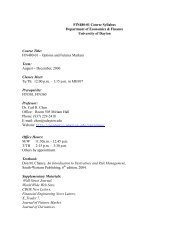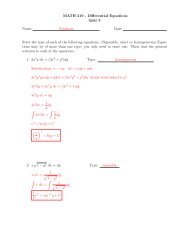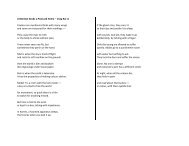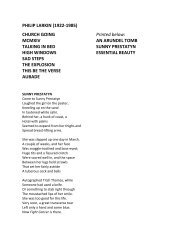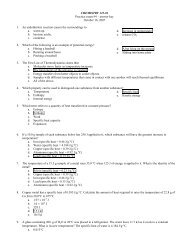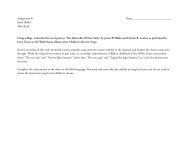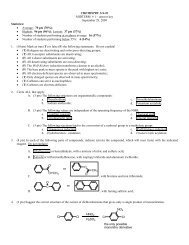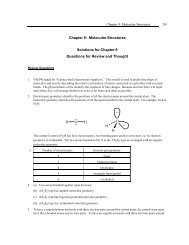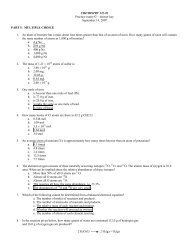Chap 26
Chap 26
Chap 26
Create successful ePaper yourself
Turn your PDF publications into a flip-book with our unique Google optimized e-Paper software.
MONEY, BANKS, AND THE FEDERAL RESERVE 239<br />
c. The banks’ reserve ratio is 2 percent.<br />
The banks’ reserve ratio is the percent of deposits that is held as reserves. In Fredzone, deposits<br />
are $500 billion and reserves are $10 billion, so the reserve ratio equals ($10 billion/$500<br />
billion) × 100, which is 2 percent.<br />
d. The currency drain is 16.67 percent.<br />
The currency drain is the percent of the quantity of money that is held as currency by<br />
households and firms. In Fredzone, deposits are $500 billion and currency is $100 billion, so the<br />
quantity of money is $600 billion. The currency drain equals ($100 billion/$600 billion) × 100,<br />
which is 16.67 percent.<br />
11. a. The quantity of money increases to $333.67 billion.<br />
The quantity of money increases by the change in the monetary base multiplied by the money<br />
multiplier. The money multiplier is 7.33 (see 11c), so when the monetary base increases by $0.5<br />
billion, the quantity of money increases by $3.67 billion. Initially, the quantity of money was<br />
$330 billion, so the new quantity of money is $333.67 billion.<br />
b. The change in the quantity of money is not equal to the change in the monetary base because of<br />
the multiplier effect. The open market operation increases bank reserves and creates excess<br />
reserves, which banks use to make new loans. New loans are used to make payments and some of<br />
these loans are placed on deposit in banks. The increase in bank deposits increases banks’<br />
reserves and increases desired reserves. But the banks now have excess reserves which they loan<br />
out and the process repeats until excess reserves have been eliminated.<br />
c. The money multiplier is the ratio of the quantity of money to the monetary base, which equals<br />
$330 billion divided by $45 billion, which equals 7.33.<br />
12. a. The quantity of money decreases to $594.55 billion.<br />
The quantity of money increases by the change in the monetary base multiplied by the money<br />
multiplier. The money multiplier is 5.45 (see 12c), so when the monetary base decreases by $1<br />
billion, the quantity of money decreases by $5.45 billion. Initially, the quantity of money was<br />
$600 billion, so the new quantity of money is $594.55 billion.<br />
b. The change in the quantity of money is not equal to the change in the monetary base because of<br />
the multiplier effect. The open market sale decreases bank reserves, so banks calls in loans to<br />
restore their reserves to their desired level. As loans are repaid, the deposits decrease and the<br />
quantity of money decreases. As deposits decrease, banks decrease their desired reserves further,<br />
but desired reserves remain less than actual reserves. Banks continue to call in loans until actual<br />
reserves equal desired reserves.<br />
c. The money multiplier is the ratio of the quantity of money to the monetary base, which equals<br />
$600 billion divided by $110 billion, which equals 5.45.




